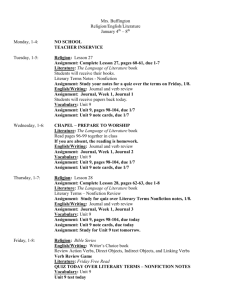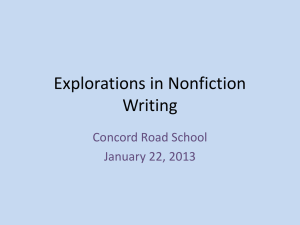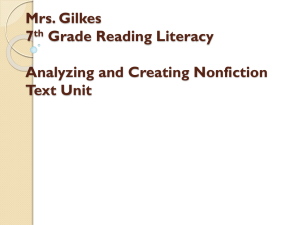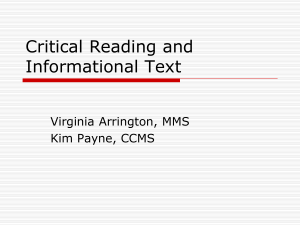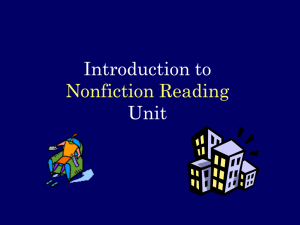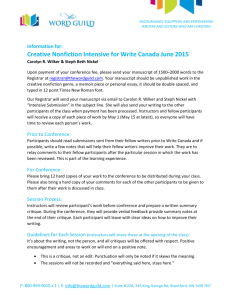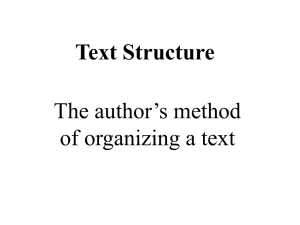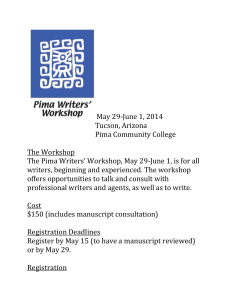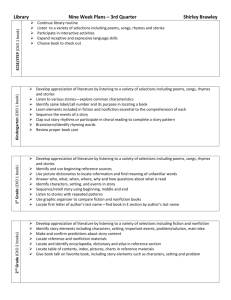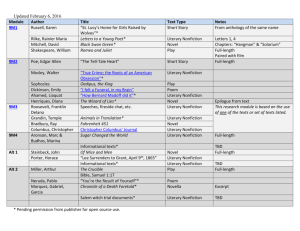Unit 3- Types of Nonfiction
advertisement
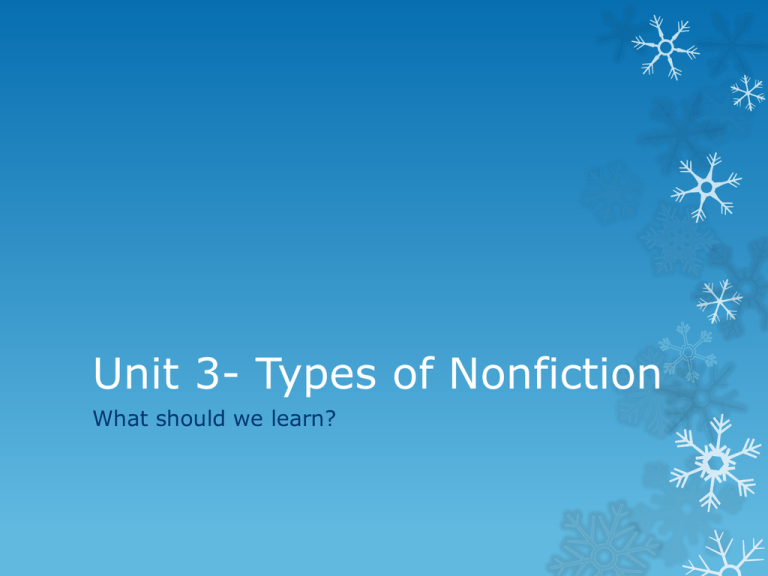
Unit 3- Types of Nonfiction What should we learn? Elements of Nonfiction Nonfiction- writing that is true or thought to be true Functional Texts- practical documents that help people perform everyday tasks. Literary Nonfiction- some of the same literary elements and techniques as fiction. *writers of nonfiction have a purpose or goal for writing. Structure of Nonfiction Chronological- events in order of which they happened. Spatial- describes items as they appear in space- e.g. left to right. Comparison and contrast- groups ideas based similarities and differences. Cause and effect- how one event causes, or leads to, another Problem and solution- examines a problem and examines ways to solve it. Narrative Nonfiction Direct and Indirect characterization reveal the personalities of real people. Vivid descriptions and figurative language describe real places, real historical areas, and real customs. Artful pacing and organization describe actual events. Forms of Literary Nonfiction Expository- to explain a process. Persuasive- to convince a reader to do something. Narrative- to tell a story of a real life event. Descriptive- provide a vivid picture of something. Reflective- explain an event or experience. Humorous- entertain or amuse. Analytical- break parts down to show how the parts work as a whole. Analyzing Structure of Literary Nonfiction Writers of nonfiction deliberately arrange their words, sentences , paragraphs, and sections in ways that develop their key ideas Text Features Subheads charts Key ideas First sentence Point of View Major Sections Analyzing Relationships in Literary Nonfiction Logical Relationships- work show their subjects in relationships to the larger world. Writers show how they feel about their subject by their word choice. Tone- attitude toward his or her subject or audience. Connotations- emotional associations with the word choice: positive or negative. Analyzing Relationships in Literary Nonfiction (cont.) Figurative Language- in literary nonfiction, writers often use figurative language, or unusual comparisons, to bring an idea to life and create a certain tone. “Cyclone Lily”- sarcastic tone Lily sheds her things like a tree sheds leaves.- matter of fact tone Lily is bursting with life. She can’t help but drop petals along the way.- adoring tone Central Idea The most important idea in a work or a passage of a text. A single central idea may grow out of two or more key points that develop throughout the text. Direct Central Idea- author tells the reader directly. Indirect Central Idea- reader has to inference to find the authors most important idea. Notice how the author groups details Look for sentences that pull details together. Reflective Essay Presents a writer’s thoughts and feelings- or reflectionsabout an experience or idea. Communicate thought and feelings so readers will respond with thoughts and feelings of their own.

